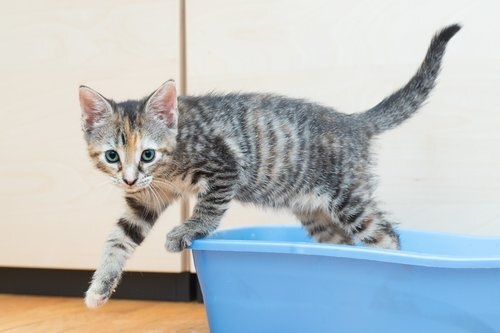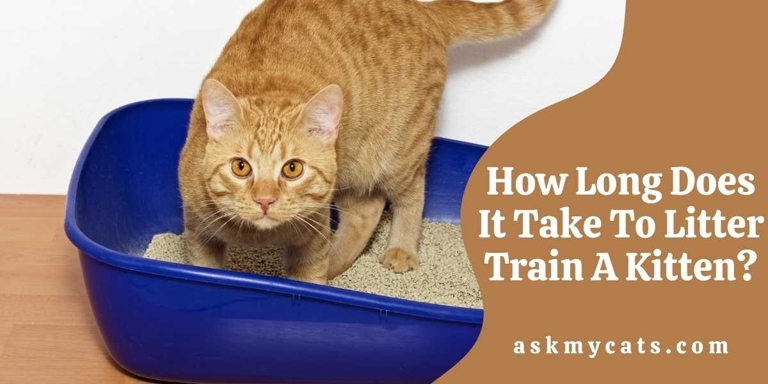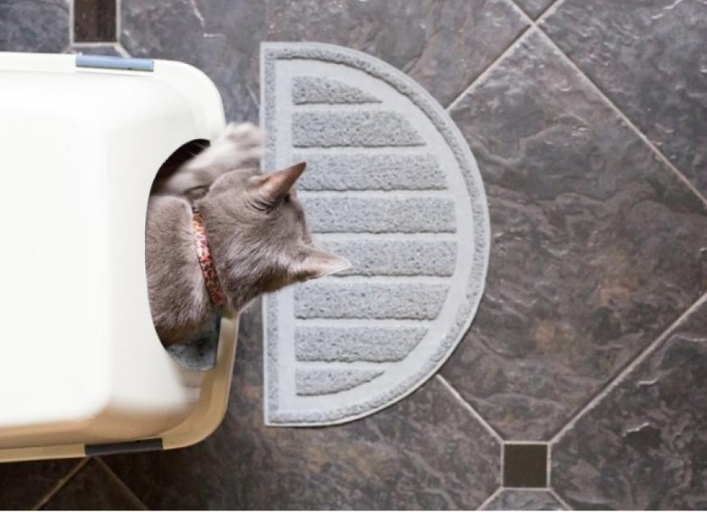Litter training a kitten is not as difficult as it may seem. With a little patience and consistency, most kittens will learn to use the litter box within a few weeks. The key is to provide your kitten with a positive and consistent litter training experience.
When to Litter Train Kittens
Litter training kittens is a process that can take several weeks. The key is to be patient and consistent. Here are a few tips on when to start litter training your kitten:
-Start around 4-6 weeks of age. This is when kittens are starting to become more independent and are able to control their elimination.

-Choose a quiet, secluded spot for the litter box. Kittens feel more comfortable in a quiet environment when they are first learning to use the litter box.
-Be patient and consistent. It may take a few weeks for your kitten to get the hang of using the litter box. With a little patience and consistency, your kitten will be litter trained in no time. Do not give up!
Is Litterbox Training a Kitten Difficult?
Once the kitten gets used to using the litter box, you can gradually increase the amount of litter. Litter box training a kitten is not difficult, but it does take some time and patience. The key is to make sure the litter box is easily accessible and to start with a small amount of litter.
Picking Out the Right Litterbox for Your Kitten
Here are a few things to consider when choosing a litter box for your kitten: Litter training a kitten is not as difficult as it may seem. In fact, with a little patience and the right litter box, your kitten will be using the litter box in no time.
Get More Than One Box
Whatever you use, make sure it is big enough for your kittens to move around in and that they can easily get in and out. Others use a plastic under-bed storage box. It is best to have one box per kitten, plus one extra. Some people use a large storage tote with a cut-out door as a litter box. If you have more than three kittens, you may need to get creative with your litter box set-up. Kittens are very clean creatures and will usually not use a litter box that is dirty. If you have more than one kitten, you will need more than one litter box.
Picking Out the Right Size Litterbox
It should be big enough for your kitten to move around in, but not so big that it is overwhelming. Some litters are better for kittens than others. You will also want to consider the location of the litterbox. The size of the litterbox is important. The type of litter you use is also important. There are a few things to consider when picking out the right litterbox for your kitten. It should be in a place where your kitten can easily get to it and where it will not be disturbed by other animals or people.
My Recommended Pick for Litter Training Your Kitten
If you’re looking for a litter to help with training your kitten, I recommend the Nature’s Miracle Just for Cats Advanced High Sided Litter Box. It’s a great option because it has high sides to help contain messes, and a built-in ramp to make it easy for your kitten to get in and out. It’s also affordable and easy to find in stores.
Don’t Forget The Litter Scoop!
If you’re looking for a litter scoop that will make your life easier, then I highly recommend the Don’t Forget The Litter Scoop! This scoop is specifically designed to make it easy to scoop up your kitten’s waste, and it’s also very affordable. I’ve used this scoop for years and it’s never let me down.
Choosing The Right Cat Litter:
The type of litter you choose can affect how quickly your kitten learns to use the litter box, and it can also affect your kitten’s health. Choosing the right cat litter is important for a number of reasons. Some types of litter are more likely to cause respiratory problems, so it’s important to choose a litter that is safe for your kitten.
The first is the type of litter. There are a few things to consider when choosing a cat litter. Clumping litter is the most popular type of litter, and it is also the easiest to use. There are many different types of litter on the market, and each has its own advantages and disadvantages. Non-clumping litter is less popular, but it is cheaper and it is less likely to cause respiratory problems.
Kittens need a small, shallow litter box. The second thing to consider is the size of the litter. A large, deep litter box can be overwhelming for a kitten and may make it more difficult to use the litter box.
Perfumed litters can be overwhelming for a kitten, and they may cause respiratory problems. The third thing to consider is the scent of the litter. Some litters are perfumed, while others are unscented. Unscented litters are a better choice for kittens.
Clumping litters are more expensive than non-clumping litters, but they are easier to use. The fourth thing to consider is the price of the litter.
Some brands are better than others, and you may want to try a few different brands to find the one that works best for your kitten. The fifth thing to consider is the brand of the litter.

Some brands offer a money-back satisfaction guarantee, so you can be sure you’re getting a quality product. The sixth and final thing to consider is the warranty.
Now that you know what to look for in a cat litter, you’re ready to choose the right one for your kitten.
Texture
Some have clumping capabilities, while others do not. Some are softer, others are rougher. There are a variety of textures available when it comes to cat litters. So, how do you know which texture is right for your cat?
If you have a cat that likes to dig and scratch in their litter, a rougher texture may be best. This will provide them with the satisfaction of digging and scratching, without making too much of a mess. The answer may lie in your cat’s preferences.
This will help to prevent any litter from being tracked out of the box and onto your floor. If you have a cat that is more fastidious, a softer texture may be best.

These litters form clumps when wet, making them easy to scoop out. Clumping litters are also an option. This can be helpful if you have a cat that tends to urinate in large amounts.
Try out a few different types of litter and see which one your cat seems to prefer. Ultimately, the best way to determine which texture is right for your cat is to experiment.
The Messiness Factor
There are a lot of factors to consider when choosing the right cat litter, and the messiness factor is one of them. However, absorbent litters can also be more expensive. Some litters are more absorbent than others, which means they’ll do a better job of trapping urine and feces and keeping your cat’s litter box clean.

These litters will require more frequent changing, but they can be more cost-effective in the long run. If you’re on a budget, you might want to consider a less absorbent litter.
No matter which type of litter you choose, be sure to scoop it regularly to keep the litter box clean and fresh.
What are the cat litter options out there?
So, how do you know which one is best for your kitten? There are even litters made of crystals! Here are a few things to consider when choosing a litter: Some are made of clay, others are made of recycled paper, and still others are made of natural materials like wood chips or pine needles. There are a lot of different cat litters out there.
Clumping vs Non-Clumping
Non-clumping litters are made of materials such as wood, corn, or recycled paper. There are two types of cat litters available on the market: clumping and non-clumping. Clumping litters are made of bentonite clay, which forms clumps when it comes into contact with moisture.
Clumping litters are more popular than non-clumping litters because they are more effective at absorbing urine and feces. However, clumping litters are more expensive than non-clumping litters. Clumping litters also make it easier to scoop out waste, which means that the litter box will need to be cleaned less often.

Non-clumping litters also tend to tracking, which means that they can be tracked out of the litter box and onto your floor. Non-clumping litters are not as effective at absorbing urine and feces, but they are less expensive than clumping litters.
If you are looking for an inexpensive litter option, non-clumping litters may be a good choice. However, if you are looking for a litter that is more effective at absorbing waste and preventing tracking, clumping litters are a better option.
Scented vs Unscented
Unscented litter is made with the same materials but does not have a fragrance. This type of litter is designed to mask the smell of cat urine and feces. There are two main types of cat litter: scented and unscented. This type of litter is designed for people who are sensitive to smells or who do not want their home to smell like a litter box. Scented litter is usually made with clay or other absorbent materials and is infused with a fragrance.
My Recommended Cat Litter for Training Your Kitten
In this section, we’ll discuss my top pick for the best cat litter for training your kitten. If you’re looking for a recommended cat litter to help with training your kitten, you’ve come to the right place. This litter is highly effective in helping to train your kitten to use the litter box, and it’s also very affordable.
Where To Put The Litterbox?
The most important part is choosing the right location for the litter box. Litter training a kitten is not as difficult as it may seem. It is important to keep the following things in mind when choosing a location:
Put Your Kitten in the Box
“Put Your Kitten in the Box” is a method that can be used to help speed up the process. The key is to be patient and consistent. Litter training a kitten is a process that can take several weeks.
Reward Your Kitten for Using the Litterbox
Litter training a kitten can be a challenge, but it is important to reward your kitten when they use the litter box. There are a few different ways to do this, but the most important thing is to be consistent. The key is to make sure that they know they are being rewarded for using the litter box. You can use treats, toys, or even just verbal praise to reward your kitten.
Cleaning the Litterbox
It is important to scoop the litterbox daily and to clean it out completely at least once a week. Cleaning the litterbox is an important part of litter training your kitten.
Frequently Asked Questions
1. How long does it take to litter train a kitten?
It usually takes around two to three weeks to litter train a kitten. However, some kittens may take a little longer or shorter to learn how to use the litter box.
2. What are some things I can do to help my kitten learn to use the litter box?
There are a few things you can do to help your kitten learn to use the litter box. First, make sure the litter box is in a quiet, easily accessible location. Second, keep the litter box clean and fresh. Third, praise your kitten when they use the litter box.
3. What should I do if my kitten has an accident outside of the litter box?
If your kitten has an accident outside of the litter box, simply clean up the mess and continue to praise your kitten when they use the litter box.
4. What are some common reasons why kittens don’t use the litter box?
There are a few common reasons why kittens don’t use the litter box. One reason is that the litter box is too dirty. Another reason is that the litter box is in an inconvenient location. Lastly, some kittens may be afraid of the litter box.
5. What should I do if I think my kitten is afraid of the litter box?
If you think your kitten is afraid of the litter box, try placing a soft, comfortable blanket or towel in the box. You can also try placing the litter box in a different location.
Final thoughts
Litter training a kitten is not difficult, but it does take some time and patience. The most important thing is to be consistent with your kitten and never give up. With a little bit of effort, you will have a litter-trained kitten in no time.
